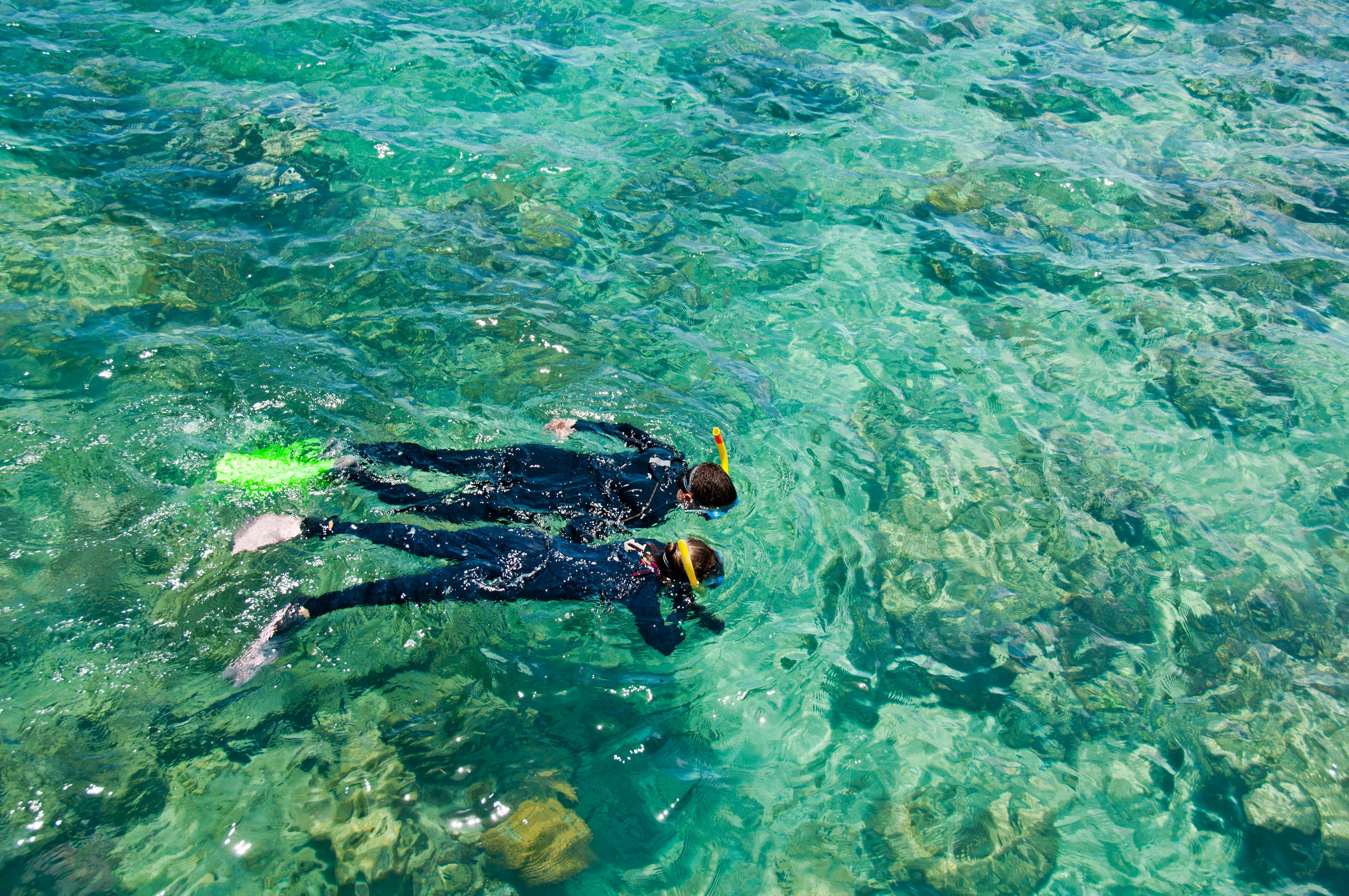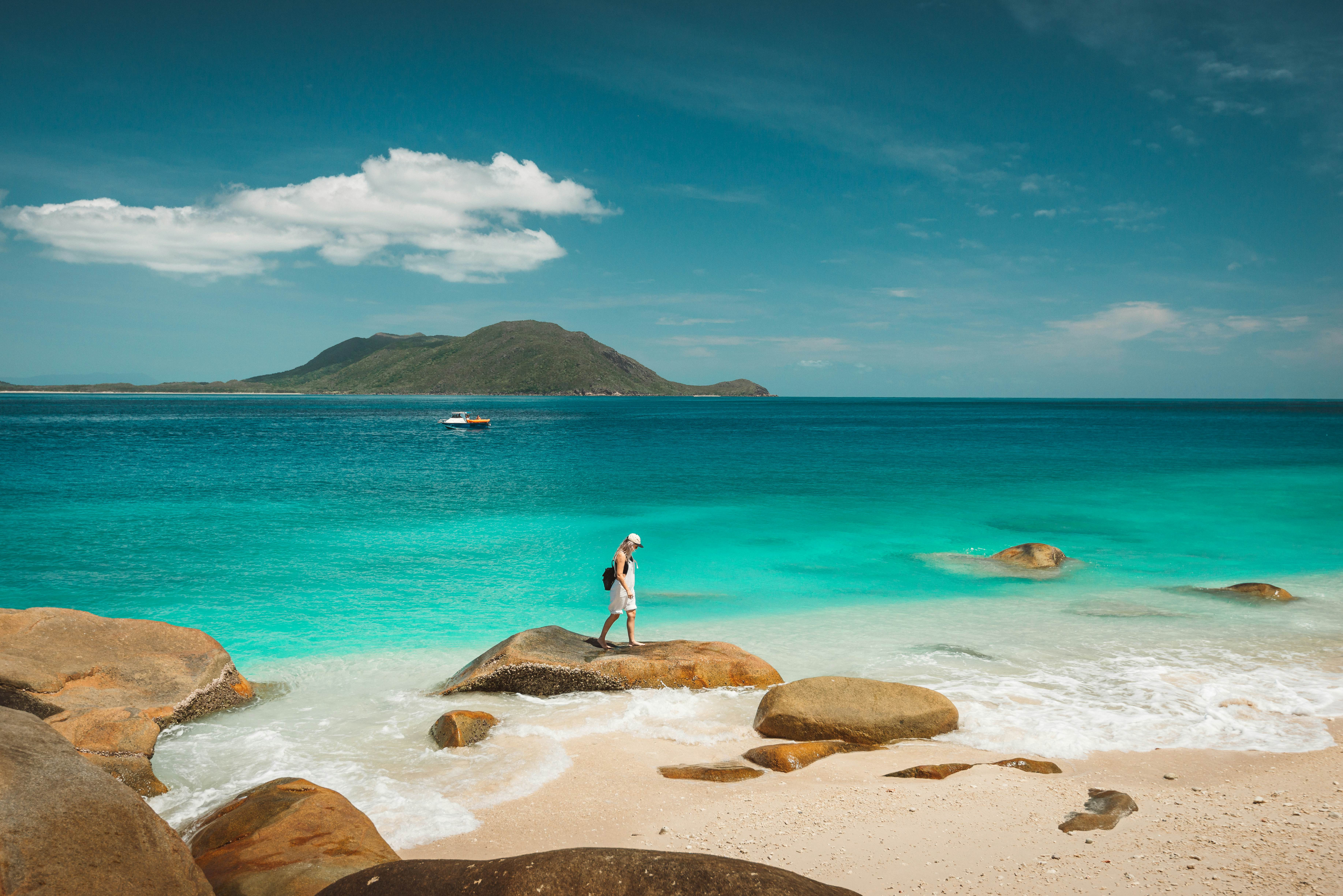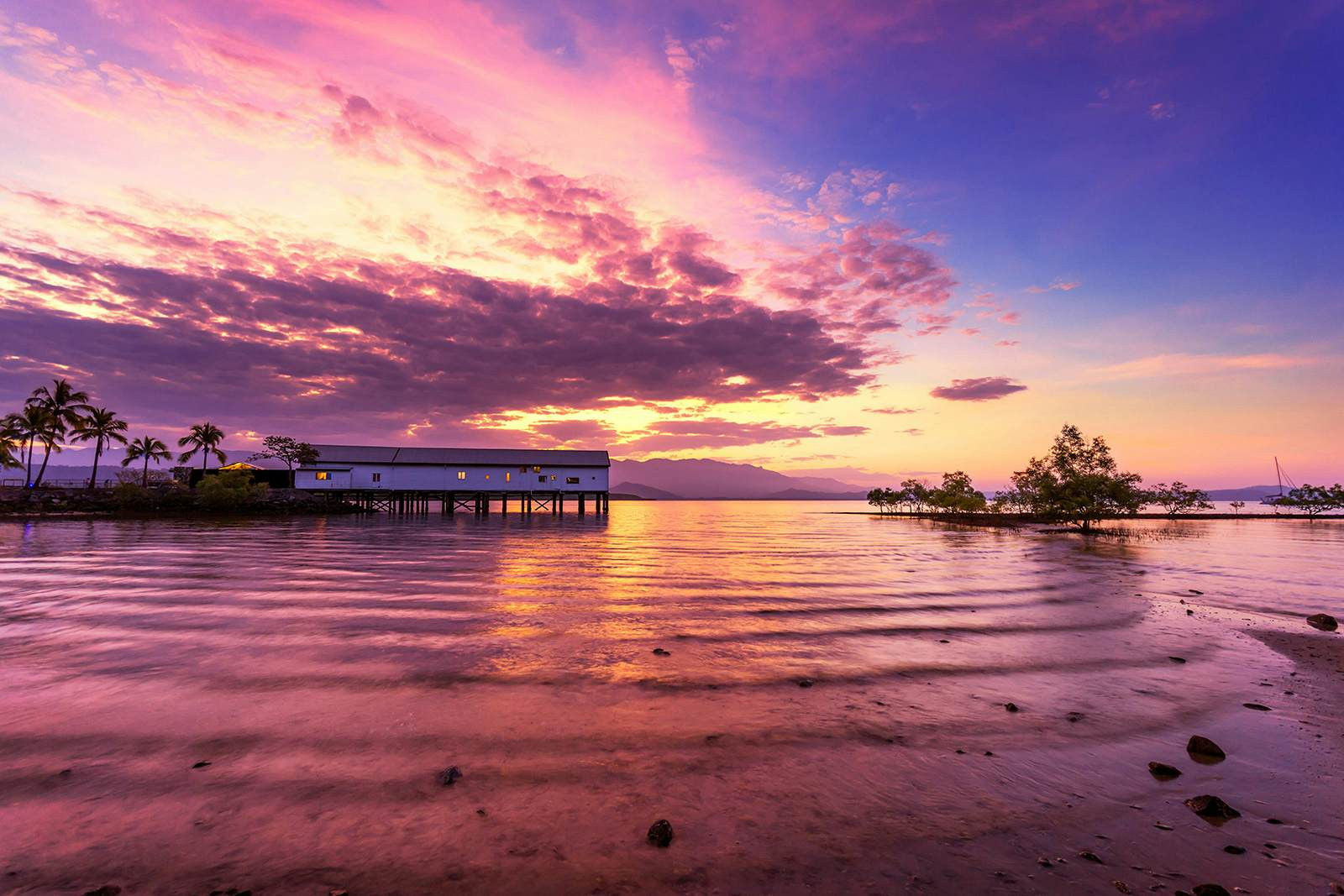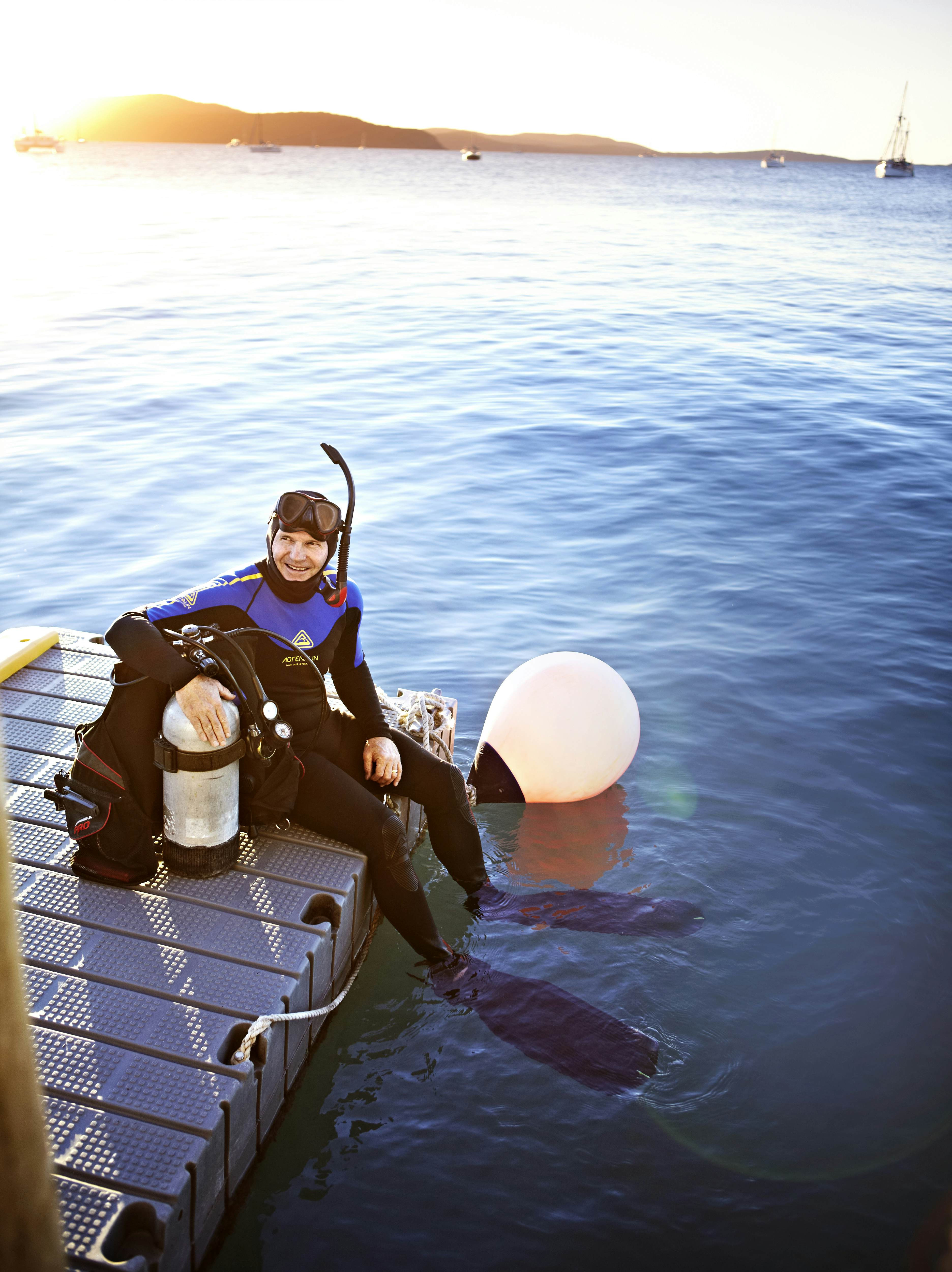The best time to visit the Great Barrier Reef is generally from June to November, according to experts. SIXT.VN can help you plan your trip to this natural wonder, ensuring a memorable and hassle-free experience. Optimize your travel plans now with expert guidance, discovering the most beautiful spots and activities while supporting responsible tourism.
1. When is the Best Time to Plan Your Great Barrier Reef Travel and Tourism?
The best time to visit the Great Barrier Reef is generally from June to November. During these months, the weather is mild, with lower humidity and less rainfall, providing optimal conditions for snorkeling, diving, and other water activities. This period also falls outside of stinger season, reducing the risk of jellyfish encounters.
From December to March, northern Queensland experiences its wet season, characterized by oppressive heat, heavy rainfall, and potential cyclones, although you can often find lower prices on accommodation and reef tours during this time. Stinger (jellyfish) season spans from November to May, during which Lycra stinger suits are typically provided for snorkelers and divers as protection. However, the Whitsundays and the southern Great Barrier Reef, near Great Keppel Island and Lady Elliot Island, can be delightful year-round destinations. For specific natural events, whale migration occurs during the winter months of June to October, turtle nesting and hatching happen from November to April, and coral spawning takes place over a few days between November and December. Manta rays are particularly abundant around Lady Elliot Island in the Australian winter.
 Snorkelers, Great Barrier Reef, Australia
Snorkelers, Great Barrier Reef, Australia
2. How Much Time Should You Allocate to Fully Experience Great Barrier Reef Travel and Tourism?
You can get a taste of the Great Barrier Reef in as little as half a day from Queensland’s coastal hubs, but a full day is recommended for exploring the outer reef, which boasts more impressive diving and snorkeling locations.
For a more immersive experience, consider liveaboard dive boats that visit the most spectacular reefs. These trips typically depart from Cairns and last from one to seven nights. In the southern regions, sailing trips in the Whitsundays offer another popular way to experience the Great Barrier Reef Marine Park. Standard trips usually last two nights and three days, including snorkeling stops and optional introductory dives. According to research from Tourism Australia in 2023, extending your stay to at least three days allows for a more comprehensive exploration of the reef’s diverse ecosystems.
3. Can You Stay Directly On the Great Barrier Reef?
Yes, it’s indeed possible to stay on numerous islands and coral cays of the reef’s 1050 islands. Waking up on the doorstep of the reef can be a reality at island resorts such as Lizard Island (accessible by plane from Cairns), Green or Fitzroy Island (accessible by boat or ferry from Cairns), the Whitsundays (fly to Hamilton Island or take a ferry from Airlie Beach), Heron or Wilson Island (accessible by barge from Gladstone), or Lady Elliot Island (accessible by plane from Bundaberg, Brisbane, or the Gold Coast), among others.
Pontoon-based accommodations are also available through Cruise Whitsundays and Lady Musgrave Experience (operating from Bundaberg), offering unique reef stay experiences. According to a 2022 study by James Cook University, island-based tourism contributes significantly to the local economy and provides immersive experiences for visitors.
 Nudey beach on Fitzroy island near Cairns in Queensland, Australia
Nudey beach on Fitzroy island near Cairns in Queensland, Australia
4. What’s The Easiest Way To Access the Great Barrier Reef for Travel and Tourism?
Cairns and the nearby resort town of Port Douglas serve as the primary launch points for reef tours, with various operators providing options ranging from half-day trips on large boats to intimate multi-day luxury charters. Cairns boasts an international airport, with transfer services available to Port Douglas.
South of Cairns, reef tours operate from Mission Beach, Townsville, Airlie Beach and the Whitsundays, Bundaberg, Mackay, Yeppoon, Gladstone, Agnes Water, and the town of 1770. Most of these hubs have domestic airports, and the Spirit of Queensland train connects Brisbane to Cairns by rail. Reaching the outer reef typically takes between 90 and 120 minutes by boat. Large catamarans, which are less likely to cause seasickness, depart from Cairns, Port Douglas, the Whitsundays, and Bundaberg. According to data from the Queensland Government in 2023, Cairns and Port Douglas handle over 70% of all Great Barrier Reef tourist departures.
5. What are the Top Activities to Experience During Great Barrier Reef Travel and Tourism?
Diving and snorkeling are quintessential activities for most visitors to the Great Barrier Reef, offering unparalleled opportunities to explore this aquatic wilderness.
For those who prefer to stay dry, scenic flights in small planes or helicopters from Cairns or the Whitsundays provide breathtaking views of the reef. Non-swimmers can also enjoy the reef from glass-bottom boats, semi-submersibles, and underwater observatories located at pontoons visited on day trips from Cairns, Port Douglas, the Whitsundays, and Bundaberg. Alternatively, enjoy the stunning island scenery on a Whitsundays sailing tour. On land, Indigenous-guided tours offer a unique opportunity to learn about the deep connection between Aboriginal and Torres Strait Islander peoples and the reef. Dreamtime Dive and Snorkel in Cairns provides such immersive experiences.
Cairns and Port Douglas also serve as excellent bases for exploring the lush Daintree Rainforest. At the southern end of the reef, the Mon Repos Turtle Centre in Bundaberg offers insights into sea turtles, with ranger-led tours available from November to March to witness green and loggerhead turtles nesting or hatching.
 Sugar Wharf in Port Douglas. Photo by Stoneography / Getty.
Sugar Wharf in Port Douglas. Photo by Stoneography / Getty.
6. Where Can Families Find The Most Child-Friendly Accommodations and Activities in Great Barrier Reef Travel and Tourism?
Many families are drawn to the abundance of family-friendly resorts and reef tour options available in Cairns and Port Douglas.
In the Whitsundays, Hamilton Island and Daydream Island Resort offer excellent family-friendly island bases, while Airlie Beach features a wide range of caravan parks ideal for families on road trips. Boat trips to the outer reef often include visits to family-friendly pontoons such as Reef Magic, which opened near Cairns in 2022. These pontoons offer nervous snorkelers the chance to view fish without fully entering the water, as well as dry options like semi-submarines, glass-bottom boats, and underwater observatories. According to a 2021 report by Tourism Queensland, family-friendly resorts and tours make up 40% of the tourism offerings in the Great Barrier Reef region.
7. What’s The Budget Needed To Experience the Great Barrier Reef?
A standard day trip to the outer reef, including snorkeling gear, lunch, and glass-bottom boat tours (if available), typically costs between AUD 200 and AUD 350 per adult, with family rates often available. Scuba dives can usually be added for an extra cost, with a budget of around AUD 200 for two dives.
The best deals can usually be found in Cairns, which offers a wider selection of operators. Half-day trips to the inner reef provide a great way to save both time and money. Top snorkeling spots visited on these trips include Mackay Reef off Cape Tribulation (offered exclusively by Ocean Safari) and the Low Isles off Port Douglas (Reef Sprinter currently offers the most affordable tour). Camping on islands within Great Barrier Reef national parks, such as Capricornia Cayes National Park, Fitzroy Island National Park, and Whitsunday Islands National Park, offers one of the most budget-friendly ways to stay on the reef. The camping rate is just AUD 7.25 per night, but boat transfer costs can add up. According to budgetyourtrip.com, the average cost for a one-week trip to the Great Barrier Reef is around $1,500 USD per person, including flights, accommodation, and activities.
8. Where Can You Find The Best Diving and Snorkeling Spots on the Reef for Great Barrier Reef Travel and Tourism?
Exceptional diving and snorkeling opportunities can be found along the entire length of the reef, with a rich diversity of corals, clams, tropical fish, turtles, rays, sharks, and other marine creatures commonly spotted.
While the corals tend to be more vibrant to the north of Townsville, the slightly cooler southern Great Barrier Reef is generally less prone to coral bleaching and is an excellent location for spotting manta rays. For access to the most exquisite sections of the outer reef, such as the Ribbon, Osprey, Milln, Bougainville, and Holmes reefs, consider signing up for a liveaboard trip from Cairns. Popular reefs visited on day trips include Agincourt Reef (off Port Douglas) and John Brewer Reef (off Townsville). John Brewer Reef is also home to the Coral Greenhouse, an underwater art installation that is part of the Museum of Underwater Art. Near Townsville, the century-old SS Yongala is widely regarded as one of the world’s best wreck dives.
 Portrait of Great Barrier Reef dive instructor
Portrait of Great Barrier Reef dive instructor
9. Is it Possible to Get Scuba Certified While Visiting the Great Barrier Reef?
Yes, you can obtain scuba certification at the Great Barrier Reef.
The primary learning centers are located in Cairns, where open water courses are offered by operators like ProDive Cairns. These courses typically include two days of pool and classroom training, followed by two days of reef diving on day trips or three days of diving on a two-night liveaboard trip. Advanced courses are usually hosted on liveaboards. According to PADI (Professional Association of Diving Instructors), completing a scuba certification course on the Great Barrier Reef offers a unique and unforgettable experience.
10. Is the Great Barrier Reef Under Threat, and How Can Tourists Help During Great Barrier Reef Travel and Tourism?
The Great Barrier Reef faces significant threats, including coral bleaching caused by heat stress, coral-eating crown-of-thorns starfish, cyclones, flooding, land-based runoff, and marine pollution.
Approximately 73% of the 1,000 reefs surveyed during the summer of 2023/24 showed signs of coral bleaching due to heat stress. While some areas have struggled to recover from bleaching events, others have shown resilience, offering hope for the future of this dynamic ecosystem. Visitors can assist scientists in monitoring the reef by reporting bleaching and other observations through the Eye on the Reef app. Supporting conservation efforts through citizen science-based tours offered by operators like Passions of Paradise in Cairns is another way to contribute. The Great Barrier Reef Foundation also provides options for donations and involvement in conservation projects.
11. What Essential Items Should You Pack for a Trip to the Great Barrier Reef?
Sun protection is crucial for any trip to the Great Barrier Reef.
Use reef-safe sunscreen with physical UV blockers like zinc oxide and titanium dioxide, avoiding chemical ingredients such as oxybenzone and octinoxate that can harm coral. Regardless of the weather forecast, pack warm layers and rain gear. If you plan on snorkeling or diving frequently, consider bringing your own gear to save on rental costs. A waterproof camera is also a great addition for capturing the stunning underwater scenery.
 Plane view of the famous Heart Reef (Great Barrier Reef) at the coastline of Airlie Beach near the Whitsunday Islands (Whitsunday Islands, Australia)
Plane view of the famous Heart Reef (Great Barrier Reef) at the coastline of Airlie Beach near the Whitsunday Islands (Whitsunday Islands, Australia)
12. Are There Accessible Travel Options Available for the Great Barrier Reef?
Yes, the Cairns region provides the most extensive range of accessible accommodations, reef tours, and attractions with wheelchair access, along with support for visitors with vision and hearing difficulties or other specific needs.
Organizations like Spinal Life Australia offer resources and assistance for travelers with disabilities. Many tour operators also provide specialized services to ensure everyone can enjoy the Great Barrier Reef.
13. How Can You Ensure Safety While Visiting the Great Barrier Reef?
Tourism in the Great Barrier Reef Marine Park is carefully managed to prevent harm to visitors and the reef. Always follow safety instructions and avoid touching coral and other marine life.
Shark encounters are rare, and jellyfish stings can be prevented by wearing a stinger suit during stinger season. Outside of stinger season, wearing a rash vest, swim shirt, or wetsuit can help protect against non-life-threatening stinging creatures like sea lice. While saltwater crocodiles are uncommon on the Great Barrier Reef, they are present along the coast. Always adhere to designated swimming areas and be croc-safe. Divers Alert Network (DAN) also provides valuable safety information and resources for divers.
14. What Unique and Memorable Experiences Can You Enjoy on the Great Barrier Reef?
One of the most memorable experiences is staying at the reef’s southern tip, where a barren coral cay has been transformed into a thriving ecosystem.
This island’s relaxed, family-friendly resort operates almost entirely on solar power. Enjoy snorkeling with turtles on the house reef, scuba diving with manta rays, and observing rare seabirds that nest on the island. Indigenous-guided tours offer profound insights into the cultural and ecological significance of the reef. Consider a scenic flight over the Heart Reef in the Whitsundays for a truly unforgettable view. According to traveler reviews on TripAdvisor, these unique experiences often rank as the highlights of a Great Barrier Reef visit.
15. How can SIXT.VN assist with your Great Barrier Reef travel plans?
SIXT.VN can assist you with various aspects of your Great Barrier Reef travel plans. We offer personalized travel itineraries tailored to your preferences and budget, ensuring you experience the best of this natural wonder.
Our services include airport transfers for a seamless arrival and departure, hotel bookings with a range of options to suit your needs, and curated tour packages that highlight the most stunning locations and activities. With SIXT.VN, you can enjoy a hassle-free, convenient, and reliable travel experience, allowing you to focus on creating unforgettable memories. Contact us today to start planning your dream trip to the Great Barrier Reef.
Address: 260 Cau Giay, Hanoi, Vietnam
Hotline/Whatsapp: +84 986 244 358
Website: SIXT.VN
FAQ about Great Barrier Reef Travel and Tourism
1. What is the best month to visit the Great Barrier Reef?
The best months to visit the Great Barrier Reef are generally from June to November, offering mild weather and optimal conditions for water activities.
2. How much does it cost to visit the Great Barrier Reef?
A day trip to the outer reef costs between AUD 200 and AUD 350 per adult, while a week-long trip can average around $1,500 USD per person.
3. Can you swim in the Great Barrier Reef?
Yes, swimming is allowed in the Great Barrier Reef, but it’s important to follow safety guidelines and wear a stinger suit during stinger season.
4. What should I wear to the Great Barrier Reef?
Wear lightweight, breathable clothing, reef-safe sunscreen, a hat, and swimwear. A stinger suit is recommended during stinger season.
5. Is the Great Barrier Reef safe for tourists?
Yes, tourism is managed to ensure visitor safety. Follow safety instructions, avoid touching coral, and be aware of marine life.
6. How long does it take to get to the Great Barrier Reef from Cairns?
It typically takes between 90 and 120 minutes by boat to reach the outer reef from Cairns.
7. What marine life can I see at the Great Barrier Reef?
You can see a rich diversity of marine life, including corals, tropical fish, turtles, rays, sharks, and manta rays.
8. Are there any eco-friendly tour options available?
Yes, many tour operators offer eco-friendly tours that support conservation efforts and promote responsible tourism.
9. Can I snorkel if I’m not a strong swimmer?
Yes, many tours offer assistance for nervous snorkelers, with options like pontoons and shallow water areas.
10. What is coral bleaching and how does it affect the reef?
Coral bleaching is a stress response where corals expel algae, causing them to turn white. It can weaken or kill corals and is caused by factors like heat stress and pollution.



